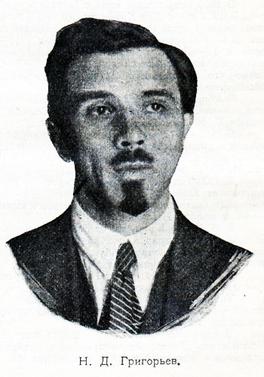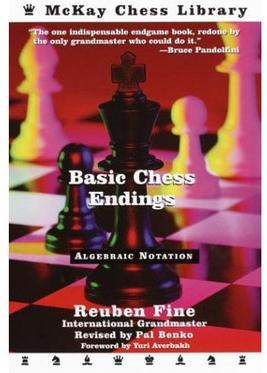
The pawn is the most numerous and weakest piece in the game of chess. It may move one vacant square directly forward, it may move two vacant squares directly forward on its first move, and it may capture one square diagonally forward. Each player begins a game with eight pawns, one on each square of their second rank. The white pawns start on a2 through h2; the black pawns start on a7 through h7.
In chess and other similar games, the endgame is the stage of the game after the middlegame. The endgame begins when few pieces are left on the board.
Zugzwang is a situation found in chess and other turn-based games wherein one player is put at a disadvantage because of their obligation to make a move; a player is said to be "in zugzwang" when any legal move will worsen their position.
In the game of chess, an endgame study, or just study, is a composed position—that is, one that has been made up rather than played in an actual game—presented as a sort of puzzle, in which the aim of the solver is to find the essentially unique way for one side to win or draw, as stipulated, against any moves the other side plays. If the study does not end in the end of the game, then the game's eventual outcome should be obvious, and White can have a selection of many different moves. There is no limit to the number of moves which are allowed to achieve the win; this distinguishes studies from the genre of direct mate problems. Such problems also differ qualitatively from the very common genre of tactical puzzles based around the middlegame, often based on an actual game, where a decisive tactic must be found.
Stalemate is a situation in chess where the player whose turn it is to move is not in check and has no legal move. Stalemate results in a draw. During the endgame, stalemate is a resource that can enable the player with the inferior position to draw the game rather than lose. In more complex positions, stalemate is much rarer, usually taking the form of a swindle that succeeds only if the superior side is inattentive. Stalemate is also a common theme in endgame studies and other chess problems.
In chess and other chess-like games, a tempo is a "turn" or single move. When a player achieves a desired result in one fewer move, the player is said to "gain a tempo"; conversely, when a player takes one more move than necessary, the player is said to "lose a tempo". Similarly, when a player forces their opponent to make moves not according to their initial plan, one is said to "gain tempo" because the opponent is wasting moves. A move that gains a tempo is often called "a move with tempo".
In chess, a relative value is a standard value conventionally assigned to each piece. Piece valuations have no role in the rules of chess but are useful as an aid to assessing a position.
The Saavedra position is one of the best-known chess endgame studies. It is named after the Spanish priest Fernando Saavedra (1849–1922), who lived in Glasgow during the late 19th century. Though not a strong player, he spotted a win involving a dramatic underpromotion in a position previously thought to have been a draw.

The Tarrasch rule is a general principle that applies in the majority of chess middlegames and endgames. Siegbert Tarrasch (1862–1934) stated the "rule" that rooks should be placed behind passed pawns – either the player's or the opponent's. The idea behind the guideline is that (1) if a player's rook is behind his passed pawn, the rook protects it as it advances, and (2) if it is behind an opponent's passed pawn, the pawn cannot advance unless it is protected along its way.

Andor Arnoldovich Lilienthal was a Hungarian and Soviet chess player. In his long career, he played against ten male and female world champions, beating Emanuel Lasker, José Raúl Capablanca, Alexander Alekhine, Max Euwe, Mikhail Botvinnik, Vasily Smyslov, and Vera Menchik.
In chess, the exchange is a material difference of a minor piece for a rook. The side which wins the rook is said to have won the exchange, while the other player has lost the exchange, since the rook is usually more valuable. Alternatively, the side having a rook for a minor piece is said to be up the exchange, and the other player is down the exchange. The opposing captures often happen on consecutive moves, although this is not strictly necessary. It is generally detrimental to lose the exchange, although occasionally one may find reason to purposely do so; the result is an exchange sacrifice. The minor exchange is an uncommon term for the exchange of a bishop and knight.
The Hedgehog is a pawn formation in chess adopted usually by Black that can arise from several openings. Black exchanges the pawn on c5 for White's pawn on d4, and then places pawns on the squares a6, b6, d6, and e6. These pawns form a row of "spines" behind which Black develops their forces. Typically, the bishops are placed on b7 and e7, knights on d7 and f6, queen on c7, and rooks on c8 and e8. Although Black's position is cramped, it has great latent energy, which may be released if Black is able to play ...b5 or ...d5 at some point. These pawn breaks are particularly effective because White usually places pawns on c4 and e4.
In chess, a fortress is an endgame drawing technique in which the side behind in material sets up a zone of protection that the opponent cannot penetrate. This might involve keeping the enemy king out of one's position, or a zone the enemy cannot force one out of. An elementary fortress is a theoretically drawn position with reduced material in which a passive defense will maintain the draw.
The rook and pawn versus rook endgame is a fundamentally important, widely studied chess endgame. Precise play is usually required in these positions. With optimal play, some complicated wins require sixty moves to either checkmate, capture the defending rook, or successfully promote the pawn. In some cases, thirty-five moves are required to advance the pawn once.
In chess, opposition is a situation in which two kings are two squares apart on the same rank or file. Since kings cannot move adjacent to each other, each king prevents the other's advance, creating a mutual blockade. In this situation, the player not having to move is said to have the opposition. It is a special type of zugzwang and most often occurs in endgames with only kings and pawns. The side with the move may have to move their king away, potentially allowing the opposing king access to important squares. Taking the opposition is a means to an end, normally to force the opponent's king to move to a weaker position, and is not always the best thing to do.
Leopold Adamovich Mitrofanov was a Russian chess composer, an International Judge of Chess Composition and an International Master of Chess Composition. He was born in Leningrad and, by profession, was a chemical engineer.
The opposite-colored bishops endgame is a chess endgame in which each side has a single bishop and the bishops reside on opposite-colored squares. Without other pieces besides pawns, these endings are widely known for their tendency to result in a draw. These are the most difficult endings in which to convert a small material advantage to a win. With additional pieces, the stronger side has more chances to win, but not as many as when bishops are on the same color.
A pawnless chess endgame is a chess endgame in which only a few pieces remain, and no pawns. The basic checkmates are types of pawnless endgames. Endgames without pawns do not occur very often in practice except for the basic checkmates of king and queen versus king, king and rook versus king, and queen versus rook. Other cases that occur occasionally are (1) a rook and minor piece versus a rook and (2) a rook versus a minor piece, especially if the minor piece is a bishop.

Nikalai (Nikolay) Dmitrievich Grigoriev was a Russian chess player and a composer of endgame studies. He was born on 14 August 1895 in Moscow, and he died there in 1938.

Basic Chess Endings is a book on chess endgames which was written by Grandmaster Reuben Fine and originally published on October 27, 1941. It is considered the first systematic book in English on the endgame phase of the game of chess. It is the best-known endgame book in English and is a classic piece of chess endgame literature. The book is dedicated to World Champion Emanuel Lasker, who died in 1941. It was revised in 2003 by Pal Benko.






